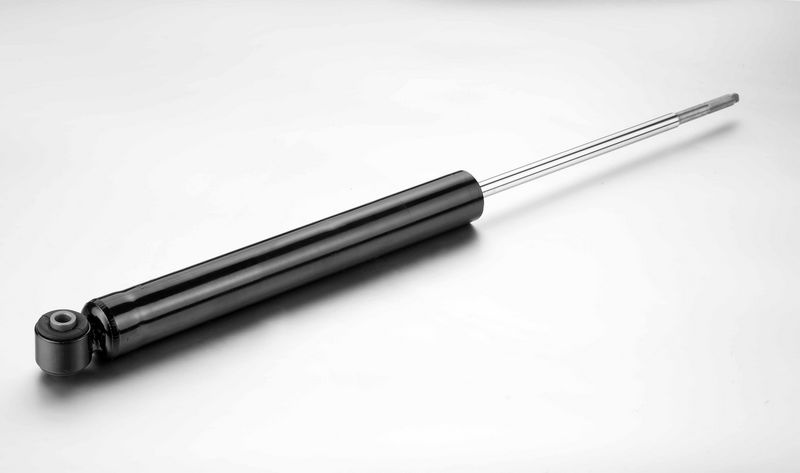Generally speaking, a shock absorber is a suspension component that controls the up-and-down motion of the vehicle’s wheels. Despite its name, a shock absorber does not actually absorb shock. Actually, the job of absorbing the jolts that result when the wheels pass over bumps or dips is handled mostly by the springs. When the car bounces, the spring transfers the energy created to a piston in a chamber that is filled with oil.
The shock absorber, which would more accurately be named damper, is a vital part of the vehicle suspension system. Its prime function is to keep your wheels in contact with the ground at all times by absorbing the energy from the coil spring. Without it, most rides in the car would be incredibly bouncy and unsettling.
Shock absorbers together with dampeners, struts and springs are vital components of a car and they together, deliver a smooth ride. They are located between the car’s frame and wheels, connected by the frame and the car’s axles, and usually have the appearance of a large spring. The mount is connected to a piston rod and the piston which the piston rod is connected to lies in a pump filled with hydraulic fluid.
You’ll know how a shock absorber works in principle if you waved your hand back and forth through water. We all know that in the process that the faster we move our hand, the more energy it takes to push against e resistance of the water. The function of shock absorbers is called dampening. That is, a conversion of kinetic energy into heat energy. The absorbers perform in a two-step process-compression and extension. During the first step, the coil springs absorb the energy impact felt while driving. Then the piston reacts to them by moving downward and compressing the hydraulic fluid in the pump, thus turning kinetic energy into heat energy. during the extension step, the piston rises up to the top of the pressure tube and the fluid is trapped above the piston in a chamber.
Over the course of automotive history there have been many different designs for shock absorbers, however, nowadays, there are four basic types available. They are twin-tube shocks, mono-tube shocks, gas-filled mono-tube shocks and external reservoir shocks.
The twin-tube design is the most common and often the least expensive one. As the name implies, in a twin-tube shock, there are two actual tubes – one the outer shock body and the other an inner cylinder in which the piston moves. Wheel motion controlling is realized by flow of the oil between the inner and outer tubes. Although it is widely used, it has its own shortcomings. The shock absorber’s ability to control wheel motion will be reduced when they are used over very bumpy roads. Because the rapid motion of the piston can cause the oil to overheat and to foam.
The mono-tube shock absorber uses a piston traveling within a single tube that is exposed more directly to the air. So the heat generated can be dissipated more easily, thus, they are less susceptible to overheating on rough road than the twin-tube shocks. However, its manufacturing price is much higher.
The gas-filled mono-tube shock has a chamber of high-pressure nitrogen above the oil chamber. They are designed to prevent foaming and bubbling in the oil. But they are expensive.
External reservoir shocks are primarily designed for ultra-high performance and racing applications. It uses a lightweight shock body that is connected through a hose to a reservoir of oil mounted in a different part of the vehicle and is very expensive.

Do car shock absorbers absorb shock?
by
Tags:
